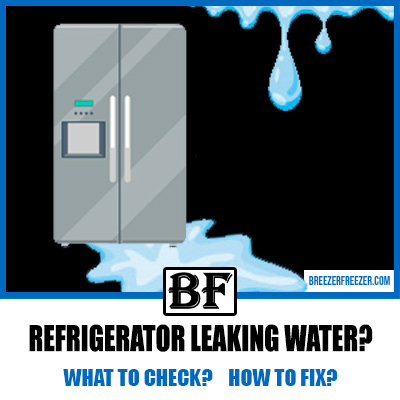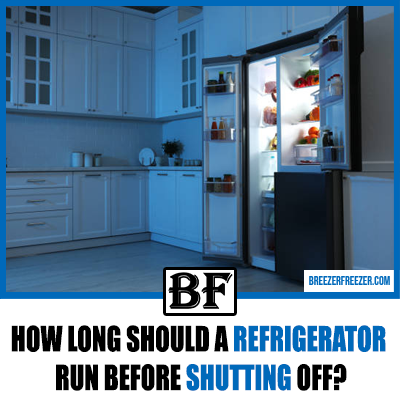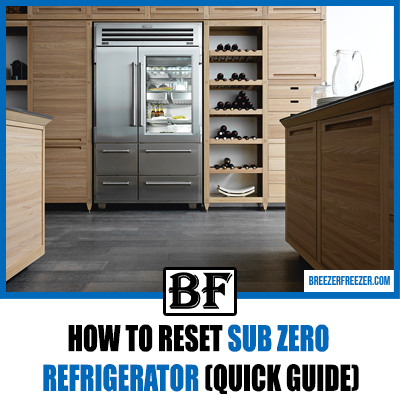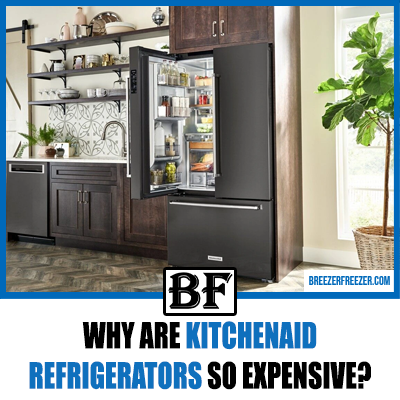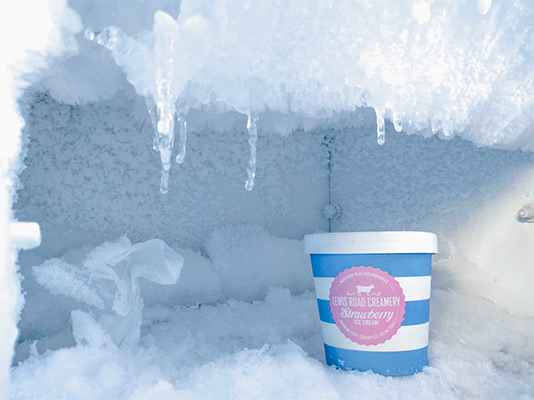What To Do If Your Refrigerator Is Leaking Water?
A refrigerator leaking water on the floor is a standard refrigerator that can usually be fixed without a professional’s help. You might not know anything about refrigerators, but performing simple troubleshooting checks will help you identify the actual problem and fix it properly.
Thankfully, a leaking refrigerator is usually just one problem that can easily be isolated and fixed. Suppose there’s liquid puddling on the floor, generally coming from the backside of the refrigerator.
In that case, it’s most probably water on floor around refrigerator and not other refrigerator substances that warrant more severe fixes, such as freon or a clear oil.
Why is my refrigerator leaking water?
- The refrigerator is not leveled.
The water in a refrigeration system is usually the condensation that is collected from the inside. This liquid goes into the drain hole at the unit’s back, from which it drips into a pan. It will collect in the pan where it is supposed to evaporate from. However, this design only works if the refrigerator is evenly placed to connect the components correctly and the water flows properly into the drain.
- The defrost drain is blocked.
Another reason why the water could be pooling on the back of the door without settling into the drip pan to evaporate may be that the drain hole is blocked. If the drain hole is blocked, there is no way for the water to reach the drip pan where it is supposed to go. This usually happens when debris, dust, or dirt clogs the hole, which causes an ice build-up that further closes the hole.
- The water supply line is clogged or frozen.
If the water supply line is clogged or frozen, this may cause the ice maker to stop producing ice or the water dispenser to stop dispensing water. All the water which is supposed to go to these components will then pool on the floor. This typically happens if the refrigerator’s temperature setting is turned up too low, which will cause the supply line to freeze.
What can I do to fix it?
If the problem is that the refrigerator is not leveled correctly, have someone help you adjust the legs’ height and position.
- First, use a lever to identify the tip of the fridge. Check all angles so that you know what specific legs to adjust.
- Second, ask another person to tip back the fridge’s front to get under it if you work with the back legs. The general rule is to tip back on the opposite side that you’ll be working on.
- Then, unscrew the legs to adjust them, being careful not to unscrew them as this will cause them to get detached.
- Withdraw yourself from underneath the fridge and put it back down.
- Use a lever to see if the fridge is leveled correctly. If not, get under it and make the necessary adjustments again.
- You can flush or spray the hole with hot water, eliminating the small debris collecting on the small opening. You can use a high-powered water sprayer, turkey baster, or funnel for this.
- Next, to further remove the more extensive blockage, you may use a pipe cleaner or a twisted clothes hanger. Typically, manufacturers also provide a cleaning tool for the drain hole. But if you don’t have one handy, straw may be used.
If this doesn’t do the trick, you may remove the fridge’s backplate using a screwdriver to get it open. Now, use a sketch of your refrigerator to locate the drain hole.
- There will be a plug called the grommet on the drain pipe. If you remove this plug, expect it to be filthy.
- Clean the plug with soap and water, making sure to remove all dirt and debris, and then put it back in.
- Get your hands on some cheap but effective refrigerator water line kits online, which typically sell for about $12.
- Prepare some hot water in a mug. Also, lay down some towels around the refrigerator, especially on the water dispenser, as you are guaranteed to make a mess.
- Fill the waterline kit with hot water.
- Connect the hose of the waterline kit into the supply line. Push it as far back as it allows, ensuring that you have a secure connection.
- Slowly, start injecting water into the line. The hot water will then get rid of the frosts in the supply line.
Water collecting in fridge
Water collecting in the bottom of a refrigerator is often caused by a blocked or malfunctioning defrost drain. The defrost drain is responsible for carrying away any excess water from the defrost cycle. If it’s blocked, the water can build up and collect in the bottom of the refrigerator.
This can cause damage to the unit and create a breeding ground for bacteria and mold. To fix this issue, it’s important to locate and clear the defrost drain. If the problem persists, it may be necessary to call a professional for further assistance.
Why is my mini fridge leaking water
A mini fridge leaking water can have several causes. One common cause is a blocked drain line, which can cause water to build up and leak out of the bottom of the refrigerator.
Another cause can be a faulty water inlet valve, which can cause water to leak out of the bottom of the refrigerator. A damaged door seal can also cause a mini fridge to leak water by allowing warm air to enter the interior and cause the compressor to work harder.
To fix the problem, it’s important to check the drain line, water inlet valve and door seal, and repair or replace them as needed. If the problem persists, it may be necessary to call a professional for further assistance.
Wine fridge leaking water on floor
A wine fridge leaking water on the floor can be caused by a variety of issues. One common cause is a blocked drain line, which can cause water to build up and leak out of the bottom of the refrigerator.
Another cause can be a faulty water inlet valve, which can cause water to leak out of the bottom of the refrigerator. A damaged door seal can also cause a wine fridge to leak water by allowing warm air to enter the interior and cause the compressor to work harder.
It is important to check the drain line, water inlet valve, and door seal and repair or replace them as needed. If the problem persists, it may be necessary to call a professional for further assistance.
Additionally, check the humidity level of the wine fridge, as high humidity can cause condensation and water buildup, which can lead to leaks.
